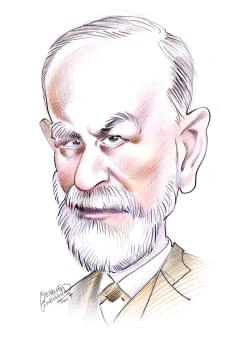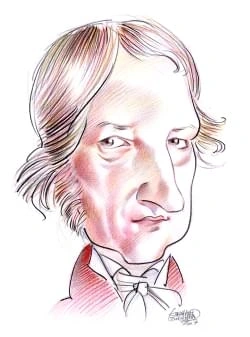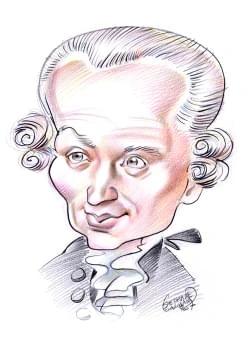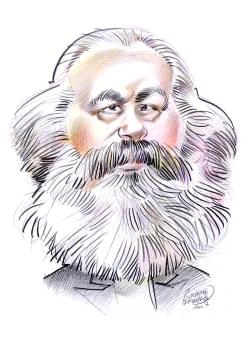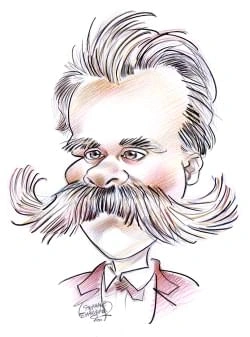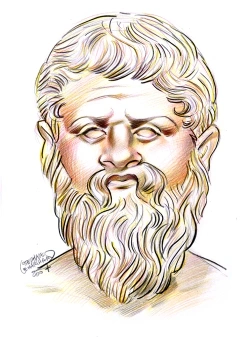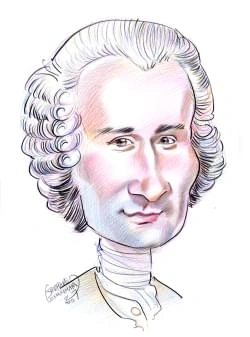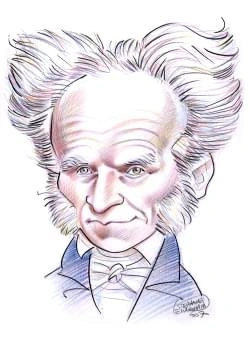545 résultats pour "west"
-
Hungary - country.
Northern Hungary lacks sufficient water, especially between July and October, when precipitation levels are typically low. Canals irrigate the Great Hungarian Plain,which is subject to drought. Because of the country’s mainly flat terrain, only limited water resources can be harnessed for hydroelectric power. F Environmental Issues Rapid industrialization in Hungary following World War II contributed significantly to a number of major environmental problems, including air, water, and soil pollu...
-
Moscow (city, Russia) - geography.
V RECREATION About 30 percent of Moscow’s territory is occupied by parks and public gardens, which were important elements of Soviet city planning. Gorky Park, which providesactivities such as amusement rides and boating, sits on the right bank of the Moscow River; the park’s display of a retired Soviet space shuttle dominates the riverside.The Moscow Zoo is located just west of the city center. The Botanical Gardens, administered by the Russian Academy of Sciences, offers a diverse display of...
-
Native Americans of North America.
addition to smallpox and measles, explorers and colonists brought a host of other diseases: bubonic plague, cholera, typhoid fever, scarlet fever, pleurisy, mumps,diphtheria, pneumonia, whooping cough, malaria, yellow fever, and various sexually transmitted infections. Despite the undisputed devastation wreaked on Indian populations after European contact, native populations showed enormous regional variability in their response todisease exposure. Some peoples survived and, in some cases, even...
-
Native Americans of North America - Canadian History.
addition to smallpox and measles, explorers and colonists brought a host of other diseases: bubonic plague, cholera, typhoid fever, scarlet fever, pleurisy, mumps,diphtheria, pneumonia, whooping cough, malaria, yellow fever, and various sexually transmitted infections. Despite the undisputed devastation wreaked on Indian populations after European contact, native populations showed enormous regional variability in their response todisease exposure. Some peoples survived and, in some cases, even...
-
Römisches Kaiserreich - Geschichte.
Reichsgebiet aus. Italien büßte seinen Sonderstatus allmählich ein, und folgerichtig erhielten unter Caracalla (211-217) alle freien Reichsbewohner das römischeBürgerrecht ( Constitutio Antinoniana von 212). Schon in severischer Zeit wandelte sich auch das außenpolitische Umfeld Roms: Im Osten trat an die Stelle des feudalisierten, innerlich geschwächten Partherreiches dieDynastie der Sassaniden (seit 224), die aus Persien in der Tradition der Achaimeniden ein neues, die römische Euphratgrenze...
-
Simón Bolívar.
Again, he expressed his dislike of federalism and his preference for strong centralized republics. He felt that Venezuela and New Granada should unite into a centralizedrepublic, which would be called Colombia. This new republic would have an elected executive and a legislature consisting of an elected lower house and a hereditaryupper house. Lastly, he spoke about the need for a union of all the countries in Spanish America to ensure prosperity and security after independence. IV BOLÍVAR AS MI...
-
Mesopotamian Art and Architecture
I
INTRODUCTION
Mesopotamian Art and Architecture, the arts and buildings of the ancient Middle Eastern civilizations that developed in the area (now Iraq) between the Tigris and
Euphrates rivers from prehistory to the 6th century
BC.
arts. III EARLY DYNASTIC PERIOD Figures from Tell AsmarCreated around 2700 bc, these stone figures are from the city of Tell Asmar in what today is Iraq. From the Temple ofAbu, the statuettes stood in watchful prayer with the wide, staring eyes often found in Sumerian sculpture. The figuresare in the Iraq Museum, Baghdād, Iraq.Art Resource, NY The first historical epoch of Sumerian dominance lasted from about 3000 BC until about 2340 BC. While earlier architectural traditions continued, a ne...
-
Besatzungszeit in Deutschland - Geschichte.
die Überreste des Faschismus auszurotten und eine demokratische Staatsform vorzubereiten. Mitte Juli 1945 wurden die Kommunistische Partei Deutschlands (KPD), dieSozialdemokratische Partei Deutschlands (SPD), die Christlich Demokratische Union (CDU) und die Liberal-Demokratische Partei (LDP) zum „Block der antifaschistisch-demokratischen Parteien” verbunden. Schon Ende 1945 allerdings zeigten die zunehmenden Eingriffe der SMAD in das Parteiengefüge, dass ein wirklich demokratisches Staatswesen n...
-
-
Military Religious Orders .
Hospitalers’ charitable functions were playing a secondary role to their military duties. Successes in war defending the Holy Land enriched the order with vast gifts ofproperty in Europe and Palestine. In the 12th century the Hospitalers acquired three impressive fortresses in Palestine at Krak des Chevaliers, Belvoir, and Margat. Atthe height of their power in the 13th century, the Hospitalers regularly supplied 500 knights to defend the Latin Kingdom of Jerusalem against the Empire. The Crusad...
-
Thailand - country.
E Natural Resources Thailand possesses a range of mineral resources. Tin is mined in the peninsula. Important gemstones, such as sapphires, are found in the southeast, and coal reserves,particularly lignite, are in the north. Fish are abundant in rivers and coastal waters. In addition to being consumed domestically, fish are also exported. F Climate Thailand experiences a typical monsoon climate. Winds blow from the northeast during the winter months of October to March or April (known as the...
-
Geographische Entdeckungen - Geschichte.
Gebietes. Noch immer aber war das Rätsel der Quelle des Nil nicht geklärt. 1856 machten sich Richard Burton und John Hanning Speke daran, den Tanganyikasee zu erkunden. Aufder Rückreise entdeckte Speke den Victoriasee, den größten Süßwassersee des Kontinents, und hielt diesen richtigerweise für die Quelle. Es kam zu ernsthaftenMeinungsverschiedenheiten zwischen den beiden Entdeckern, und erst bei einer zweiten Expedition von 1859 bis 1862 waren Speke und James Grant in der Lage zubestätigen, das...
-
Geographische Entdeckungen - geographie.
Gebietes. Noch immer aber war das Rätsel der Quelle des Nil nicht geklärt. 1856 machten sich Richard Burton und John Hanning Speke daran, den Tanganyikasee zu erkunden. Aufder Rückreise entdeckte Speke den Victoriasee, den größten Süßwassersee des Kontinents, und hielt diesen richtigerweise für die Quelle. Es kam zu ernsthaftenMeinungsverschiedenheiten zwischen den beiden Entdeckern, und erst bei einer zweiten Expedition von 1859 bis 1862 waren Speke und James Grant in der Lage zubestätigen, das...
-
Democratic Republic of the Congo - country.
Except in the high elevations, the country’s climate is very hot and humid. The average annual temperature in the low central area is about 27°C (about 80°F).Temperatures are considerably higher in February, the hottest month. At altitudes above about 1,500 m (about 5,000 ft) the average annual temperature is about 19°C(about 66°F). Average annual rainfall is about 1,500 mm (about 60 in) in the north and about 1,300 mm (about 50 in) in the south. Frequent heavy rains occur fromApril to November...
-
Ontario - Geography.
governed Ontario’s initial settlement and development. The province’s most important river is the St. Lawrence. Its route was much improved and enlarged by dredgingand canal building in the mid-20th century. This enabled large ocean-going vessels to reach Great Lake ports ( see St. Lawrence Seaway). The Ottawa River was an important early route to the interior for fur traders and timber merchants. The Niagara River, because of its falls, is a great center of hydroelectric power as well as aninte...
-
Ontario - Canadian History.
governed Ontario’s initial settlement and development. The province’s most important river is the St. Lawrence. Its route was much improved and enlarged by dredgingand canal building in the mid-20th century. This enabled large ocean-going vessels to reach Great Lake ports ( see St. Lawrence Seaway). The Ottawa River was an important early route to the interior for fur traders and timber merchants. The Niagara River, because of its falls, is a great center of hydroelectric power as well as aninte...
-
Métis - Canadian History.
authority in the Northwest Rebellion. As in 1869, they were worried about title to their river lots, which were unsurveyed and were therefore omitted from the surveyadopted by the Department of the Interior. The Métis demanded a distribution of land and scrip, as had occurred in Manitoba after 1870. The Métis action at Batoche encouraged several bands of indigenous nations (Cree, Assiniboine, and Sioux) to take up arms. Threatened with a general rising across theNorthwest Territories, the Canadi...
-
- On the road
-
Spread of Islam - History.
Muhammad died in 632 and was succeeded by Abu Bakr, the father of Muhammad’s favorite wife, Aisha. Abu Bakr was the first caliph ( khalifah, Arabic for “successor”) of Islam. Like Muhammad, Abu Bakr was a member of the Quraysh clan. While neither Abu Bakr nor any subsequent caliph claimed the role of prophet, they wereleaders of this new religious enterprise that was quickly becoming a political entity as well. The first four caliphs, all of whom were selected by some form of council ofMuslims,...
-
Delaware - geography.
D Climate Delaware has generally hot and humid summers and mild winters. D1 Temperature In July, average daytime temperatures are usually in the upper 20°s to lower 30°sC (80°sF) or even higher. But because summer nights tend to be cooler than thedays, July averages are about 24°C (about 75°F). In addition, onshore sea breezes can reduce daytime temperatures along the coast by 3 to 6 Celsius degrees (5 to 10Fahrenheit degrees). January averages range from -1°C (31°F) at Newark, in the north, t...
-
Delaware - USA History.
D Climate Delaware has generally hot and humid summers and mild winters. D1 Temperature In July, average daytime temperatures are usually in the upper 20°s to lower 30°sC (80°sF) or even higher. But because summer nights tend to be cooler than thedays, July averages are about 24°C (about 75°F). In addition, onshore sea breezes can reduce daytime temperatures along the coast by 3 to 6 Celsius degrees (5 to 10Fahrenheit degrees). January averages range from -1°C (31°F) at Newark, in the north, t...
-
Slavery in the United States - U.
tripled, from about 1.2 million to almost 4 million in 1860. The natural growth of the slave population meant that slavery could survive without new slave imports. Natural population growth also hastened the transition from an African to an African American slave population. By the 1770s, only about 20 percent of slaves in thecolonies were African-born, although the concentration of Africans remained higher in South Carolina and Georgia. After 1808 the proportion of African-born slavesbecame tin...
-
Mythology.
Across cultures, mythologies tend to describe similar characters. A common character is the trickster. The trickster is recklessly bold and even immoral, but through hisinventiveness he often helps human beings. In Greek mythology, Hermes (best known as the messenger of the gods) was a famous trickster. In one version of acharacteristic tale, Hermes, while still an infant, stole the cattle of his half-brother Apollo. To avoid leaving a trail that could be followed, Hermes made shoes from thebark...
-
Turkmenistan - country.
A Ethnic Groups With Turkmens constituting 77 percent of the population, Turkmenistan is the most ethnically homogeneous of the Central Asian republics. Uzbeks make up the largestminority group, with about 9 percent of the population. Other ethnic groups include Russians, Kazakhs, Tatars, Ukrainians, Azeris (ethnic Azerbaijanis), Armenians, andBaluch. In 1993 a bilateral treaty between Turkmenistan and Russia granted dual citizenship to Russians in the republic. At the 1995 census Russians cons...
-
Slovakia - country.
The country is divided informally into the three regions of Western Slovakia, Central Slovakia, and Eastern Slovakia, corresponding to administrative divisions that wereabolished in 1989. Most of Slovakia’s 600,000 Hungarians live in the southern parts of Western and Central Slovakia, which served as the cultural center of Hungary forseveral centuries after Hungary proper was invaded by the Ottomans in the 16th century. The Ruthenian and Ukrainian minorities are concentrated in the northernregio...
-
-
September 11 Attacks - U.
around and flew it back toward Washington, D.C. Flying low and fast, the airplane hit the Pentagon at 9:37 AM. In a bit of good fortune, the plane crashed into the west side of the building, which had recently been reinforced with stronger construction and blast-resistant windows in order to withstand a terrorist attack. Even so, theplane penetrated three of the Pentagon’s five concentric rings, taking a chunk out of the building and incinerating dozens of offices and the people who worked in t...
-
National Parks and Preserves.
Some ibex raised in Italy’s 700 sq km (220 sq mi) Gran Paradiso National Park (1922) were transferred to aid herd restoration elsewhere in the country. Switzerlandreturned lynx to Swiss National Park to keep red deer populations in check. The growth of national parks also enabled many European countries to restore forests thathad given way to industrialization by the early 20th century. Africa’s wildlife was hunted heavily from the late 19th century well into the 20th century. By 1920 big-game h...
-
Korean War.
During the summer of 1949, South Korea had expanded its army to about 90,000 troops, a strength the North matched in early 1950. The North had about 150 SovietT-34 tanks and a small but effective air force of 70 fighters and 62 light bombers—weapons either left behind when Soviet troops evacuated Korea or bought from theUSSR and China in 1949 and 1950. By June 1950 American data showed the two armies at about equal strength, with roughly equal numbers amassed along the 38thparallel. However, thi...
-
Korean War - History.
During the summer of 1949, South Korea had expanded its army to about 90,000 troops, a strength the North matched in early 1950. The North had about 150 SovietT-34 tanks and a small but effective air force of 70 fighters and 62 light bombers—weapons either left behind when Soviet troops evacuated Korea or bought from theUSSR and China in 1949 and 1950. By June 1950 American data showed the two armies at about equal strength, with roughly equal numbers amassed along the 38thparallel. However, thi...
-
Korean War - U.
During the summer of 1949, South Korea had expanded its army to about 90,000 troops, a strength the North matched in early 1950. The North had about 150 SovietT-34 tanks and a small but effective air force of 70 fighters and 62 light bombers—weapons either left behind when Soviet troops evacuated Korea or bought from theUSSR and China in 1949 and 1950. By June 1950 American data showed the two armies at about equal strength, with roughly equal numbers amassed along the 38thparallel. However, thi...
-
Georgia (state) - geography.
B Rivers and Lakes Most of the rivers of Georgia drain eastward to the Atlantic Ocean proper or southward to the Gulf of Mexico. Only a few flow northward to the Tennessee River, which isa major tributary of the Mississippi River. Most of the rivers flowing to the coasts are navigable by barges and small craft as far upstream as the Fall Line. The major river flowing to the Atlantic is the Savannah River, which, with the Tugaloo River, one of its headwaters, forms most of the state’s eastern bo...
-
Georgia (state) - USA History.
B Rivers and Lakes Most of the rivers of Georgia drain eastward to the Atlantic Ocean proper or southward to the Gulf of Mexico. Only a few flow northward to the Tennessee River, which isa major tributary of the Mississippi River. Most of the rivers flowing to the coasts are navigable by barges and small craft as far upstream as the Fall Line. The major river flowing to the Atlantic is the Savannah River, which, with the Tugaloo River, one of its headwaters, forms most of the state’s eastern bo...
-
Mental Illness.
note that under this definition, political dissidents could be considered mentally ill for refusing to accept the dictates of their government. VI PREVALENCE Mental illness affects people of all ages, races, cultures, and socioeconomic classes. The prevalence of mental illness refers to how many people experience a mentalillness during a specified time period. A United States and Worldwide In the United States, researchers estimate that about 24 percent of people 18 or older, or about 44 mill...
-
-
Meteorology.
to find the corresponding relative humidity and dew-point temperature. III SPECIAL METEOROLOGICAL INSTRUMENTS Meteorologists have developed several sophisticated instruments that measure multiple physical characteristics of the air simultaneously and at more than one location.The most important of these special instruments are radiosondes, Doppler radar, and weather satellites. A Radiosonde A radiosonde measures air temperature, air pressure, and humidity from the earth’s surface up to an alt...
-
Nordamerika - geographie.
Die Kontinentale oder Große Wasserscheide (amerikanisch Continental Divide ), die überwiegend entlang der Hauptkämme der Rocky Mountains verläuft, teilt Nordamerika in zwei große Einzugsgebiete: Auf der Ostseite der Wasserscheide fließt das Wasser zum Nordpolarmeer, zur Hudsonbai, zum Atlantischen Ozean und zum Golf von Mexiko;auf der Westseite der Continental Divide fließen die Flüsse dagegen zum Pazifischen Ozean. Zwei wichtige Entwässerungssysteme – das Flusssystem der Großen Seen mit dem Sa...
-
George Washington
I
INTRODUCTION
George Washington (1732-1799), first president of the United States (1789-1797) and one of the most important leaders in United States history.
A2 Promotion This was Washington’s first experience with the difficulties of raising troops while lacking equipment, clothing, and funds. Apparently he thought his efforts worthy ofsome recognition and successfully applied to Dinwiddie for a lieutenant colonel’s commission. He left Alexandria, Virginia, early in April with about 150 poorly equippedand half-trained troops. A3 First Battles Before he had advanced very far, Washington received news that the French had driven Trent’s men back from...
-
George Washington.
A2 Promotion This was Washington’s first experience with the difficulties of raising troops while lacking equipment, clothing, and funds. Apparently he thought his efforts worthy ofsome recognition and successfully applied to Dinwiddie for a lieutenant colonel’s commission. He left Alexandria, Virginia, early in April with about 150 poorly equippedand half-trained troops. A3 First Battles Before he had advanced very far, Washington received news that the French had driven Trent’s men back from...
-
George Washington
A2 Promotion This was Washington’s first experience with the difficulties of raising troops while lacking equipment, clothing, and funds. Apparently he thought his efforts worthy ofsome recognition and successfully applied to Dinwiddie for a lieutenant colonel’s commission. He left Alexandria, Virginia, early in April with about 150 poorly equippedand half-trained troops. A3 First Battles Before he had advanced very far, Washington received news that the French had driven Trent’s men back from...
-
Abraham Lincoln
I
INTRODUCTION
Abraham Lincoln (1809-1865), 16th president of the United States (1861-1865) and one of the great leaders in American history.
fence in 4 hectares (10 acres) to grow corn. Then he hired out to neighbors, helping them to split rails. That year, Lincoln attended a political rally and was persuaded tospeak on behalf of a local candidate. It was his first political speech. A witness recalled that Lincoln “was frightened but got warmed up and made the best speech of theday.” In 1831 Lincoln made a second trip to New Orleans. He was hired, along with his stepbrother and a cousin, by Denton Offutt, a Kentucky trader and specul...
-
Abraham Lincoln.
fence in 4 hectares (10 acres) to grow corn. Then he hired out to neighbors, helping them to split rails. That year, Lincoln attended a political rally and was persuaded tospeak on behalf of a local candidate. It was his first political speech. A witness recalled that Lincoln “was frightened but got warmed up and made the best speech of theday.” In 1831 Lincoln made a second trip to New Orleans. He was hired, along with his stepbrother and a cousin, by Denton Offutt, a Kentucky trader and specul...
-
Abraham Lincoln
fence in 4 hectares (10 acres) to grow corn. Then he hired out to neighbors, helping them to split rails. That year, Lincoln attended a political rally and was persuaded tospeak on behalf of a local candidate. It was his first political speech. A witness recalled that Lincoln “was frightened but got warmed up and made the best speech of theday.” In 1831 Lincoln made a second trip to New Orleans. He was hired, along with his stepbrother and a cousin, by Denton Offutt, a Kentucky trader and specul...
-
-
Abraham Lincoln - USA History.
fence in 4 hectares (10 acres) to grow corn. Then he hired out to neighbors, helping them to split rails. That year, Lincoln attended a political rally and was persuaded tospeak on behalf of a local candidate. It was his first political speech. A witness recalled that Lincoln “was frightened but got warmed up and made the best speech of theday.” In 1831 Lincoln made a second trip to New Orleans. He was hired, along with his stepbrother and a cousin, by Denton Offutt, a Kentucky trader and specul...
-
Illinois - geography.
the state before joining the Mississippi River at Grafton. The Illinois has been deepened and straightened and forms part of the Illinois Waterway. The watershed between rivers that flow into the Mississippi river system and rivers that flow into the Great Lakes is low and in many places is not easily discernible. Inwhat is now the Chicago area, explorers had little difficulty portaging, or carrying, their canoes over the low watershed between the Des Plaines River, which flows intothe Illinois,...
-
Illinois - USA History.
the state before joining the Mississippi River at Grafton. The Illinois has been deepened and straightened and forms part of the Illinois Waterway. The watershed between rivers that flow into the Mississippi river system and rivers that flow into the Great Lakes is low and in many places is not easily discernible. Inwhat is now the Chicago area, explorers had little difficulty portaging, or carrying, their canoes over the low watershed between the Des Plaines River, which flows intothe Illinois,...
-
Newfoundland and Labrador - Geography.
Precipitation averages about 1,120 mm (about 44 in) yearly in Newfoundland. In Labrador precipitation varies from about 1,020 mm (about 40 in) in the southeast toabout 510 mm (about 20 in) in the extreme north. Heavy winter snowfalls are common, especially in Newfoundland. D Plant Life About one-third of Newfoundland is forested, and most of the rest of the island is made up of barren areas of reindeer moss and lichens. The forests consist almostentirely of conifers. The most important species...
-
Newfoundland and Labrador - Canadian History.
Precipitation averages about 1,120 mm (about 44 in) yearly in Newfoundland. In Labrador precipitation varies from about 1,020 mm (about 40 in) in the southeast toabout 510 mm (about 20 in) in the extreme north. Heavy winter snowfalls are common, especially in Newfoundland. D Plant Life About one-third of Newfoundland is forested, and most of the rest of the island is made up of barren areas of reindeer moss and lichens. The forests consist almostentirely of conifers. The most important species...
}})
